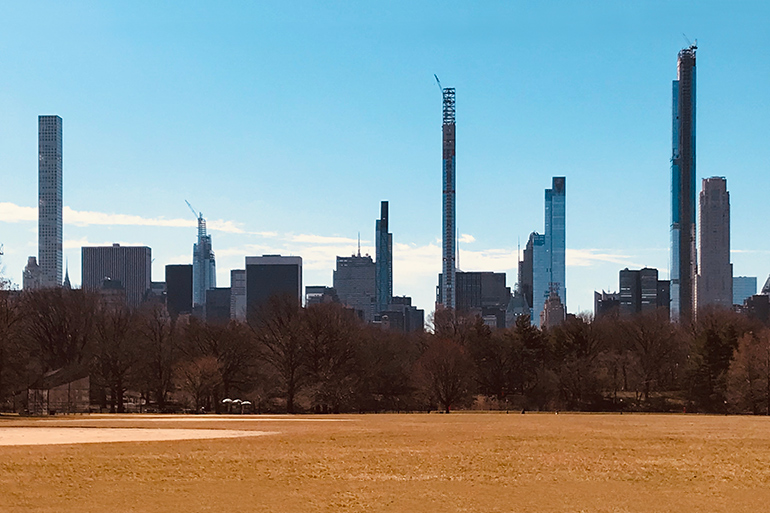

Currently, a 430-square-foot (40 m 2) unit on a pencil tower has an average price of HK$4.3 million. This was when the term "pencil towers" was used to describe these micro-developments. Developers only needed to acquire a lot with a frontage area of two small retail shops (two tong lau buildings) in order to build a tower of 20 stories or more. These factors incentivized developers to build slender residential towers on small lots with one unit per floor. The use of scissor staircases, in which two fire escape staircases intertwined, shrank the width of the fire escape void, allowing buildings to be narrower. Meanwhile, some innovative building designs emerged.

Developers needed to pay tens of thousands of HK$ for leasing each square metre (11 sq ft) of land. Hong Kong's government owned all the land and leased some out for private development through auctions for various terms, such as 50, 75, 99 and 999 years. The cost of land leasing for residential developments was also a big factor in the building designs at that time. Those public housing units were 280 square feet (26 m 2) to 450 square feet (42 m 2) which set a new expectation for the sizes of residential units in private developments. Multiple factors contributed: in 1964 the Hong Kong Housing Authority finished the Choi Hung Estate for 43,000 residents who suffered from a massive fire in 1953. In the 1970s Hong Kong was in a similar position of high land values and lax zoning laws, and started building pencil towers. It also allowed transferable development rights which gave birth to the concept of buying air rights from nearby lots. New York's subsequent 1961 Zoning Resolution set tip height limits for the first time and replaced the shape limits with floor area ratio ones. The Pierre and The Sherry-Netherland are examples of slender towers of the time which were allowed to be built close to Central Park. This caused building designs of the era to have a wide base and thinner tower covering a quarter of the lot area.

When the Equitable Building's shadow influenced the passage of a 1916 Zoning Resolution, street canyon shapes became regulated but 25% of the property was exempt. Finished 1911, it is 700 feet (210 m) tall with floor dimensions of 75 by 85 feet (23 by 26 m). The Metropolitan Life Insurance Company Tower is an example of the slim buildings of that era. The new designs were fostered by an increase in the price of land and enabled by the use of elevators and steel frame construction which allowed buildings to be built taller. The Summit (left) and the Highcliff (right) in Hong KongĮarly slender skyscrapers were first developed in Manhattan in the late 19th and early 20th century (before zoning laws). Outside of Hong Kong and New York City, Melbourne has become the centre of pencil towers. Two pencil towers on a section of 57th Street made the street the most expensive address in the global real estate market, with 41 transactions above US$25 million from 2015 to 2019. The first of this new crop of super-slim towers was the 306 m One57 tower. The newer pencil towers on Manhattan's " Billionaires' Row" (a thin strip of Midtown near Central Park) are mostly supertalls. In the 2010s, pencil towers became a new phenomenon of building design in New York City. Hong Kong's most notable towers are the 72-storey Highcliff tower, which has a slenderness ratio of 20:1, and its neighbour, The Summit, a 65-storey residential building. It has become one of the most common types of buildings in the city, making Hong Kong the world's highest concentration of pencil towers. Residential buildings of twenty or more storeys with one unit per floor were built over small lots. Hong Kong started developing pencil towers in the 1970s. There is no universal definition of how slender these buildings are to be categorised, but some definitions of 10:1 or 12:1 ratios and higher have been used. 432 Park Avenue (middle), a pencil tower in New York CityĪ pencil tower (also known as a skinny skyscraper, pencil-thin tower, super-slender tower, or super-slim tower) is a high-rise building or skyscraper with a very high slenderness ratio that is very tall and thin.


 0 kommentar(er)
0 kommentar(er)
